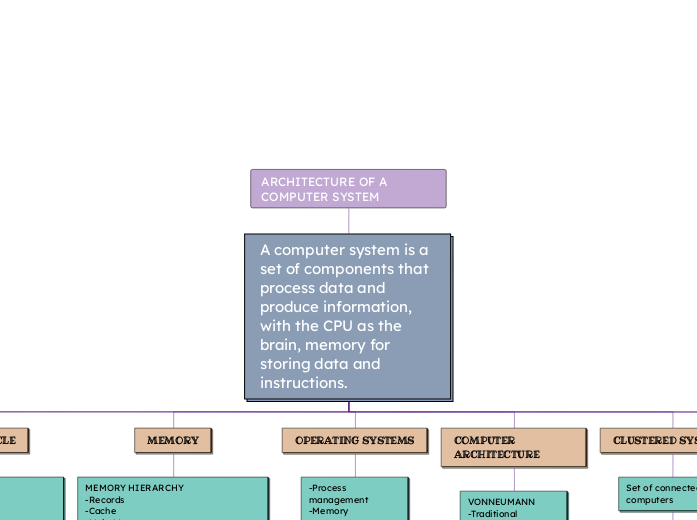by GUASON YT 1 year ago
117
ARCHITECTURE OF A COMPUTER SYSTEM

by GUASON YT 1 year ago
117

More like this
Only authorized personnel allowed
ADVANTAGES -Higher bandwidth -Lower latency -More scalability
PROCESS -DMA request -Data transfer -Interruption at completion
TYPES -High availability -Enhanced performance -Parallel computing
Harvard -Separation between data and instructions
RISC -Reduced set of instructions
CISC -complex set of instructions
TYPES -Monotasking -Multitasking -Real Time
Memory Management -Memory Allocation -Pagination -Segmentation
Interruptions -Hardware -Software
TYPES -system buses -expansion buses
FUNCTIONS - data, address and control signal transport
MEMORY -Random access memory -Reading-only memory -caché
INPUT/OUTPUT DEVICES --keyboard,mouse,scanner -monitor,printer -hard disks,optical drives -networks